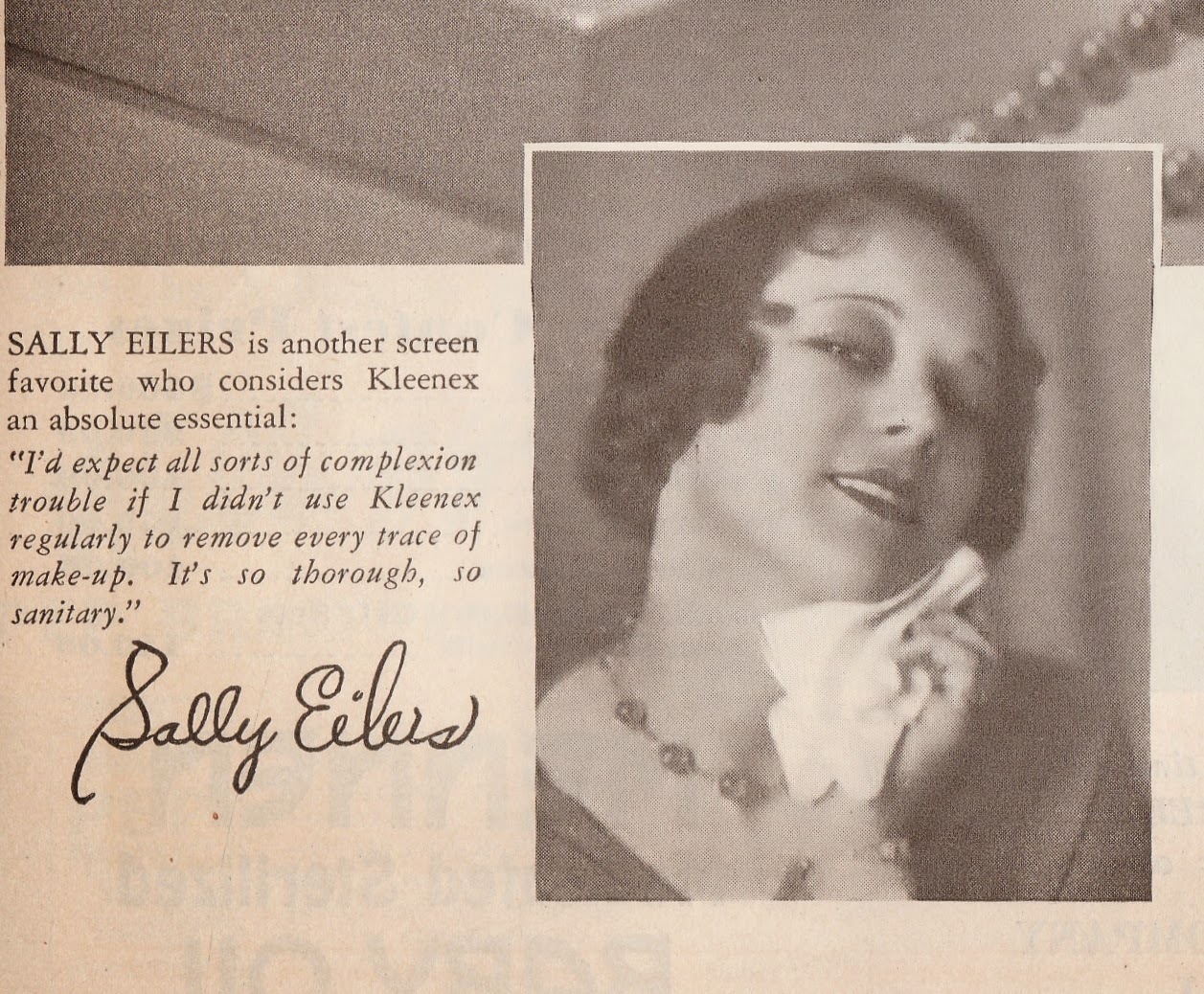The ad, placed by Kimberly-Clark, the maker of Kleenex®, advocates using Kleenex® as "the daintiest way to remove cold cream."
 |
| From Pictorial Review magazine, June 1930 |
Then as I thought about it, I remembered reading the history of handkerchiefs and how soft paper tissues -- originally developed to remove cold cream and make-up -- were also discovered to be useful for blowing one's nose. I decided to do a little more research on the topic.
Researchers at Kimberly-Clark, a paper manufacturer, spent their time in the post-World War I era looking at how paper products might help address women's needs, including the increased use of cosmetics. The researchers and marketing folks hoped that the paper tissues could be a convenient replacement for the unsightly "cold cream towel" that hung in many 1920s bathrooms.
So here's that history, illustrated in the pages of Pictorial Review:
"Most methods of cold cream removal are inefficient and even dangerously unclean. Cold cream cloths, for instance, are usually filled with germs. And germs in the pores are the starting point of pimples and blackheads. Towels are inefficient, because their harshness prevents absorption, and thus oil and dirt are not removed.... It isn't necessary to rub and scrub and stretch the skin, which beauty experts say induces wrinkles and premature aging. And it isn't necessary to soil and ruin towels."
The Kimberly-Clark website notes:
In 1925, the first Kleenex® tissue ad appeared in the Ladies Home Journal as "the new secret of keeping a pretty skin as used by famous movie stars..." Soon, ads were in all the major women's magazines…. In 1927, the ads began featuring screen and stage stars to endorse their latest beauty secret.
One of those celebrity endorsement came from actress Sally Eilers.
The Internet Movie Database recalls: Sally
Eilers enjoyed lunch with a classmate from drama school, Jane Peters (who would
later become known as Carole Lombard), at the Sennett Studios refectory. There,
she was spotted by Mack Sennett and instantly became one of his
"discoveries"…. Either Sennett or Florenz Ziegfeld Jr. (depending on
which version of the story is to be believed) tagged Sally with the publicity
line "the most beautiful girl in movies".
The
vivacious former brunette (quickly transformed by Hollywood into a blonde)
spent her apprenticeship as a leading actress co-starring in westerns with her
future husband Hoot Gibson and with Buster Keaton in Doughboys (1930)….
In the 1920s, major scientific breakthroughs included the discovery of Vitamin C, penicillin and and insulin. You would think that researchers would also have been focusing on products that might reduce the spread of cold and 'flu germs. But the Kimberly-Clark website notes that the use of their tissues in case of sneezing, came about by accident:
...Kimberly-Clark's head researcher started using the tissues in place of a handkerchief to help with his hay fever symptoms. He brought the simple but brilliant idea to market Kleenex® tissues for sneezing and other nose needs, instead of cold cream to the head of advertising.
The concept struck and in 1930, the idea of Kleenex® tissue as a handkerchief substitute was launched. Sales of Kleenex® tissues doubled the first year of this new handkerchief strategy. Instead of being a product just for women, it now served men, women and children, too.
And thus the ad in the June 1930 Pictorial Review
"Many people use Kleenex almost exclusively for handkerchiefs," the ad says. "Think how much more sanitary it is...!"
In the 1940s and 1950s, Kimberly-Clark enlisted the services of another pop culture icon -- the cartoon character Little Lulu -- to promote using Kleenex® instead of hankies.
__________________________________________
Here's an article on Pictorial Review magazine:
http://www.magazineart.org/main.php/v/womens/pictorialreview/
The history of Kleenex® is here:
https://www.kleenex.com/BrandStory.aspx
Sally Eilers's bio is here:
http://www.imdb.com/name/nm0251755/bio

.jpg)





No comments:
Post a Comment